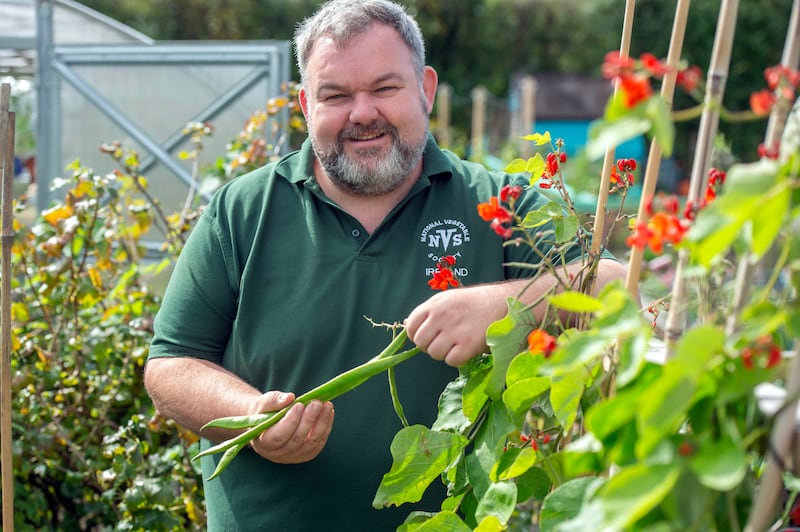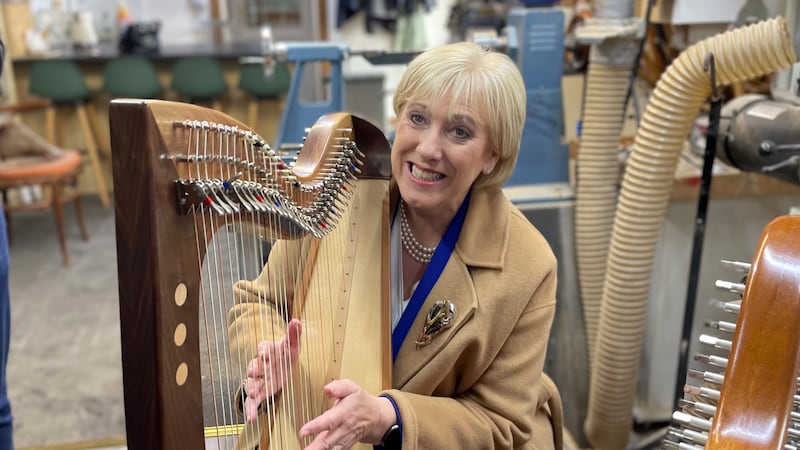I am ashamed to confess that I grew no potatoes this year. Not a single spud. Instead, my seed tubers remained unplanted inside their netting bags this extraordinarily wet spring, defiantly throwing out pale, brittle shoots that valiantly reached for any slivers of sunlight filtering through the garden shed while I fruitlessly waited for the soil to dry out enough so that I could clear a new patch of land for them.
In recent weeks I’ve consoled myself with their shop-bought equivalents. The famously floury Queens whose soft, fluffy white flesh requires immaculate timing when it comes to cooking, lest they turn into a soggy mush. The waxy, slightly nutty-flavoured Charlotte and the yellow-fleshed Orla, both “early” varieties that are indescribably delicious when lightly steamed and then ceremoniously anointed with plenty of butter and salt. But even so, nothing compares to the special magic of harvesting your own potatoes, to that moment when that hard-won buried treasure is finally brought to the surface.
A man who knows all about buried treasure is the Irish champion vegetable grower Raymond Higgins, who won his first medal as a competitive exhibitor at the tender age of 11. Higgins grows champifpotaton-level potatoes as well as onions, leeks, parsnips, beans, peas, shallots, kohlrabi, cauliflower and tomatoes, skills that he first learned from his grandfather growing up in Westmeath. Last year he won three all-Ireland titles (or took “red” as it’s known) at the Tullamore Show, going on to exhibit his produce at Harrogate in the UK where he won yet more awards. Chairman of the flourishing Irish branch of the UK-based National Vegetable Society (NVS), most of his growing now takes place at his lovingly tended 2½ allotments at the Hydro Farm site near Blarney, Co Cork.
Countering the popular notion that champion vegetable growing is all about size and good looks over quality, Higgins says flavour is top of the list of winning qualities for most of his society’s members. “Definitely. Good looks aren’t enough. They’ve got to taste delicious.”
READ MORE
Much like a Michelin star-winning chef sharing a favourite recipe, this All-Ireland Potato Champion can tell you that the secret of growing outstandingly good spuds is a combination of ordering high-quality seed potatoes very early in the season, careful chitting (he always chits or pre-sprouts both early and maincrop varieties), removing excess shoots with a knife a week before planting to leave no more than three viable shoots, planting into a great growing medium enriched with a slow-release fertiliser and well-rotted manure, very regular watering (“absolutely crucial”); generous spacing (“two feet between tubers, three feet between rows to help prevent disease”), and nipping out any flower stems as they appear in order to extend the growing period. Generously pre-watering of the ground/growing medium before planting also boosts growth.
Higgins was one of the many exhibitors taking part in the NVS Irish Championship last weekend at the Moate Agricultural Show in Co Westmeath where the star guest and head judge was the famous Welsh champion gardener, grower, multiple Chelsea gold medal winner and president of the NVS, Medwyn Williams, now in his 80s. “A legend,” says Higgins admiringly.
Along with exhibiting, Higgins frequently acts as a professional judge himself at shows around the country, a job that involves everything from testing exhibit-standard potatoes for hidden blemishes to carefully assessing their dry matter content (“you slice them in half with a knife and then rub the two halves together. Too much froth means they’re still too wet”). Classic exhibition varieties that he loves include the aforementioned British Queen or Queens as it’s better known, Kerr’s Pink, Winston and Rooster. But he says new Irish varieties bred for their exceptional blight resistance and vigour are increasingly coming to the fore, including the white-fleshed maincrop known as Kelly and the purple-eyed, second-early known as Irish Gold.

Tomatoes are another passion. Higgins raises his from seed sown in late January under cover and with gentle heat, subsequently using some of the young sideshoots of the resulting baby plants as cuttings to propagate yet more new plants. The latter, he says, are more productive with additional trusses of fruit. Again, he says the secret of success is a combination of a very good growing medium, regular feeding, pinching off sideshoots, generous spacing, removal of lower leaves and good ventilation to reduce the risk of disease. “A good watering regime is also really important. I never wet the foliage by overhead watering, for example, which would encourage diseases like blight. Instead, I use a watering can with the ‘rose’ off, directing the water straight on to the soil or compost.” His current favourite is Damaress, a new high-cropping hybrid variety which he says tastes as beautiful as it looks.
Before Brexit and the pandemic, the UK was an important supplier of seed of award-winning varieties for many Irish members of the NVS. Since then, they’ve seriously upped their game when it comes to learning how to home-save seed of vegetables, traditional skills that were once the norm and are now making a welcome comeback borne of necessity. “Along with regular Zooms, we also have meetings several times a year where we host talks and hold seed swaps, all great ways to share our skills and knowledge,” says Higgins. Impressively, the society’s members range in age from young teenagers to early 90s, proof that age really is just a number when it comes to doing something you love. For more details, see www.facebook.com/NVSIreland/ and nvsuk.org.uk.
This week
At this time of year it’s easy to forget that houseplants can really benefit from some TLC in the shape of regular watering, liquid feeding and removal of any dead or damaged leaves. This is also a good time of year to gently repot plants that have outgrown their containers, making sure to use a suitable compost. Avoid bumping up the size of the new container too much, which can inadvertently cause the root systems to sit in cool, damp compost, resulting in problems with disease.
Protect leafy vegetable crops against bird damage over the coming months, especially brassica crops such as kale, cabbage and Brussels sprouts which can suffer very bad damage by pigeons.
Dates for your diary
Saturday, August 31st and Sunday, September 1st (2pm-6pm): Festival of Flowers, a celebration of the centenary of St Oliver Plunkett Church, Sea Road, Haggardstown, Blackrock, Co Louth, curated by the Chelsea gold medal-winning garden designer Paul Martin with an outstanding array of displays by floral designers including Jenny Murphy (also a Chelsea gold medal winner), Caroline Slevin, Blooms and Strandfield, all welcome.
Saturday, August 31st, 2.30pm-4.30pm at St Nessan’s Community School, Baldoyle, Dublin, Howth & Sutton Horticultural Autumn Show and Plant Sale, new exhibitors welcome, see www.hshs.ie for more information. September 8th, Fota House and Gardens, Fota, Co Cork, The Annual ISNA Autumn Plant Fair will take place from 11am-4pm with a wide variety of stalls by many of the country’s leading small specialist nurseries, see irishspecialistnurseriesassociation.com
















